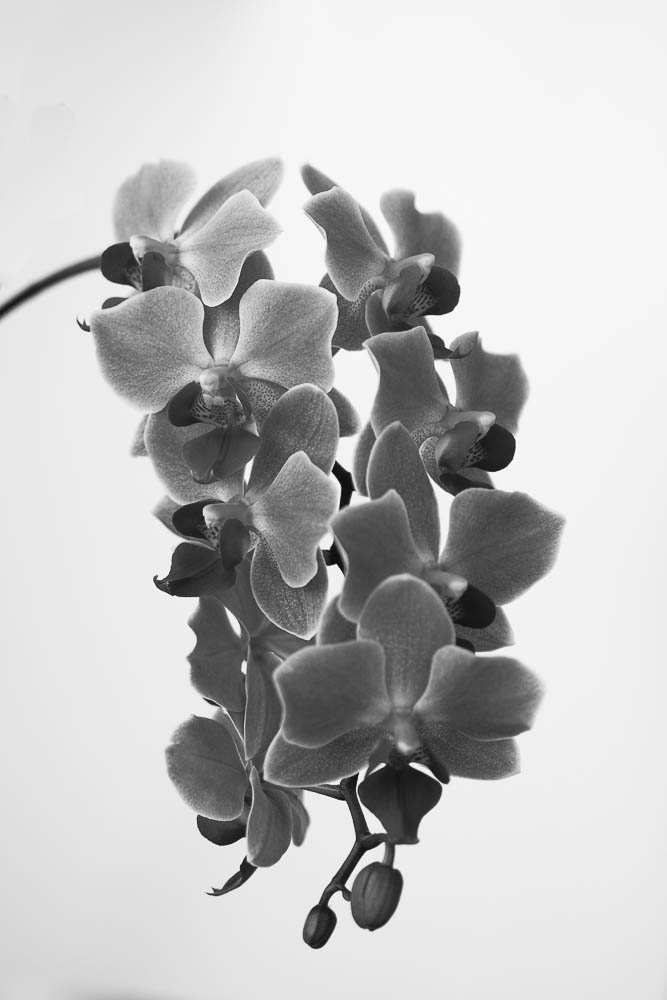The first part of this exercise was to emulate the work of Karl Blossfeldt by capturing images of plants with plain backgrounds. His work shows many macro images of plants and objects captured against plain backgrounds, using natural light in a way that avoids shadows. His images really emphasize shape, textures and details of his subjects. Due to this approach the work looks very staged and almost like a series of images for museum specimen categorisation. All his images are black and white (he would be restricted by technology to black and white), but the real beauty in the images for me, is in the grey tones, the texture and details that these tones expose.
I took a number of images in strong overcast daylight using 100mm macro lens, using a white sheet of A4 paper as a background. Some images were converted to black and white where this was thought to enhance the image.
One image stood out for me, with shape and texture very evident.

The colour image was also striking, but the impact comes from the colours

Other images from this series, are as follows:
My learning from this exercise was that plain backgrounds really do change images. For black and white images, they tend to highlight shapes and textures, whereas for colour images ,which have strong colours, it is the colour that dominates as the subject. On a technical note, I used a wide aperture (f2.8) and gained a narrow depth of field and whilst it added to the aesthetics of some images, it distracted from most, as the texture and detail was lost due to the narrow depth of field.
Now for the next part of this exercise, to do this with people.








Leave a comment